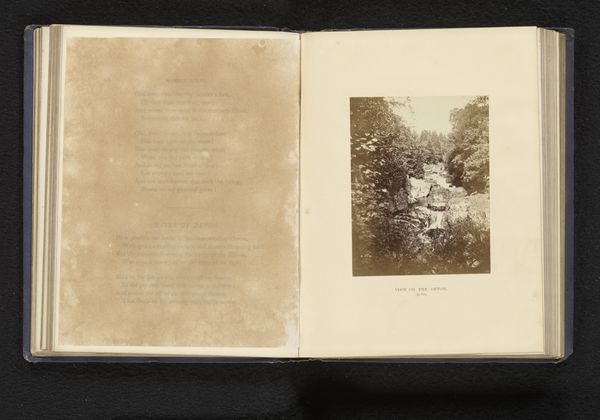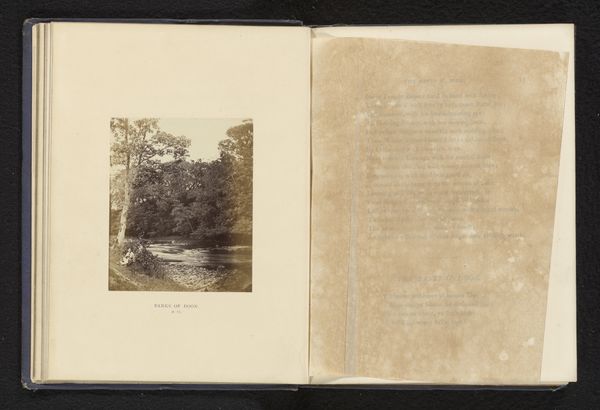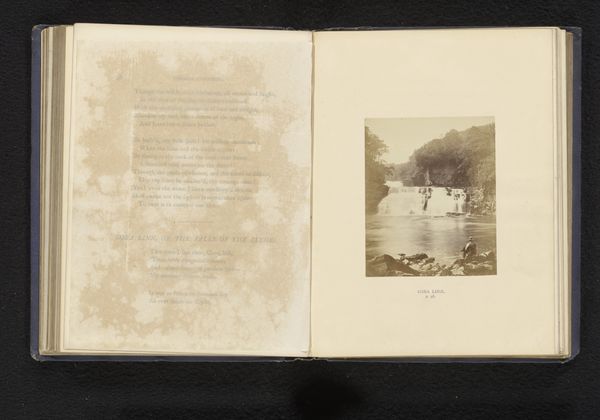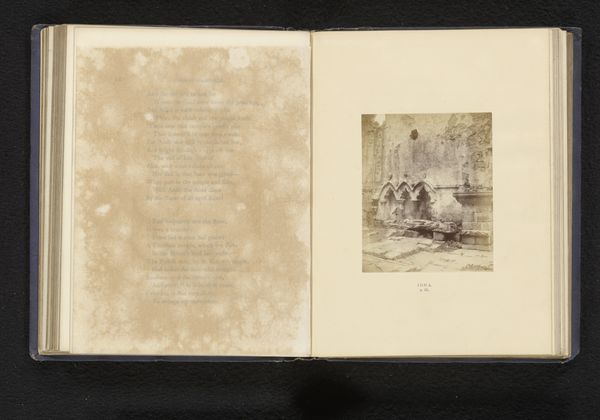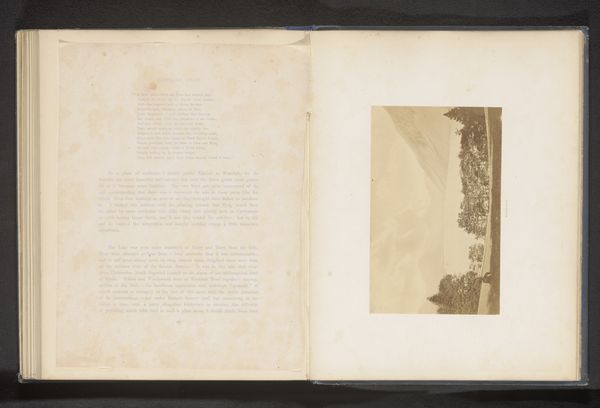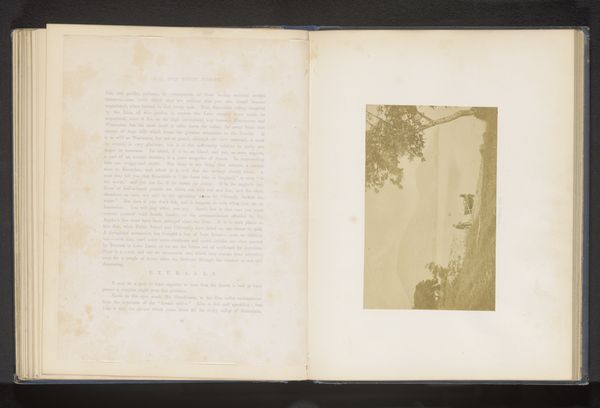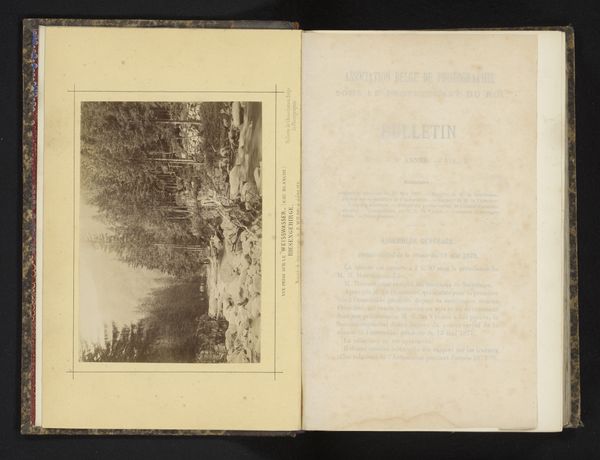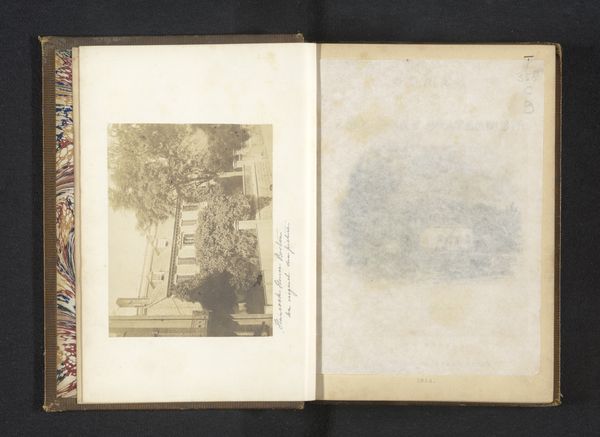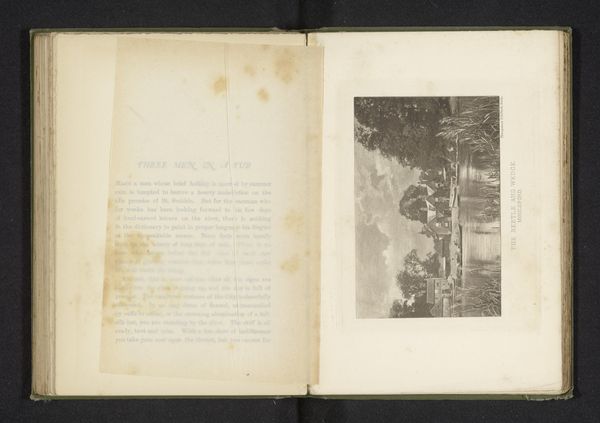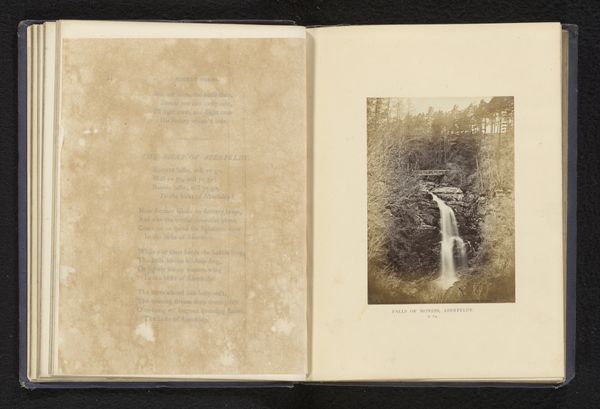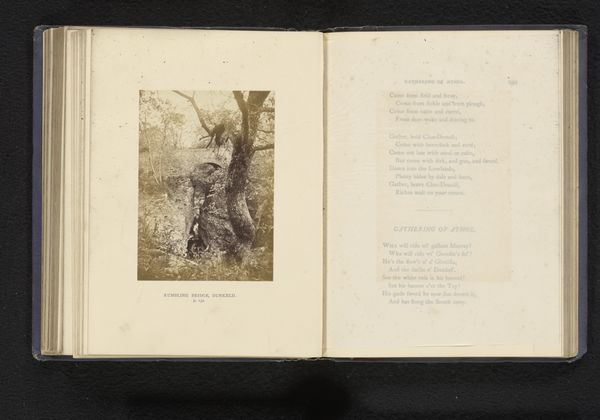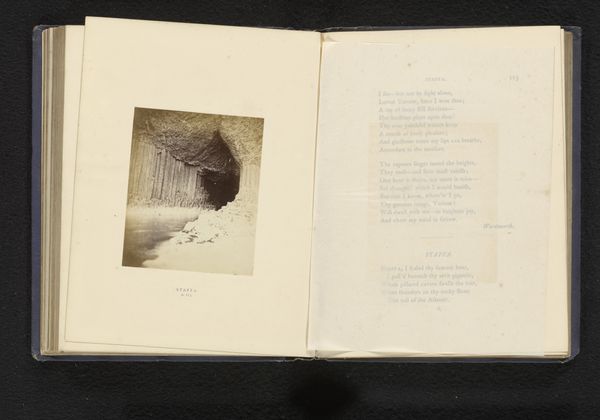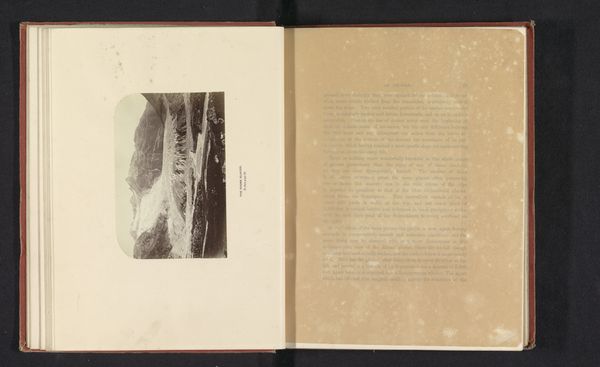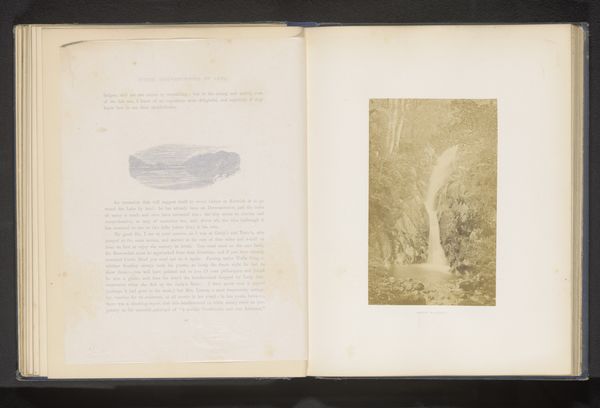
Gezicht op de rivier Doon, met op de achtergrond het Burns Monument before 1868
0:00
0:00
Dimensions: height 94 mm, width 78 mm
Copyright: Rijks Museum: Open Domain
Editor: Here we have a gelatin-silver print, "Gezicht op de rivier Doon, met op de achtergrond het Burns Monument," created sometime before 1868. I find the composition quite serene; the gentle curve of the river leads the eye towards the monument nestled amongst the trees. How might we interpret its historical significance? Curator: The placement within an album suggests this image functions less as a standalone art object and more as part of a narrative, a collection, or a keepsake. Considering it was made before 1868, when photography was rapidly evolving as both art form and document, the inclusion of the Burns Monument indicates an intent beyond pure landscape. The monument acts as a visual anchor, lending historical weight and cultural meaning. How might the act of viewing this image in an album affect our understanding of its content, relative to, say, viewing the print unattached in a museum setting? Editor: I see your point! Presenting the print within an album likely shifts its function away from high art. It almost suggests a personal connection to Scottish literary heritage. Curator: Precisely. The monument, dedicated to the poet Robert Burns, transforms the image into a symbolic landscape—a space imbued with national identity and romantic ideals. Does understanding this influence your reading of the imagery? Does it evoke anything new, now that you are seeing the picture of it in that light? Editor: Absolutely. Knowing about Robert Burns shifts my understanding completely; it's no longer just a pretty scene, but a statement of cultural pride, packaged and consumed as part of a broader engagement with romanticism. I never considered how the placement of art alters its perception. Curator: It underscores the power of context. Think about how exhibition design, collecting habits, or even this audio guide shape how viewers engage with artworks and their surrounding historical narratives. It highlights art's dynamic role within ever shifting networks. Editor: Thanks for this new outlook on this work! It definitely taught me a lot about the power of contextualization.
Comments
No comments
Be the first to comment and join the conversation on the ultimate creative platform.
